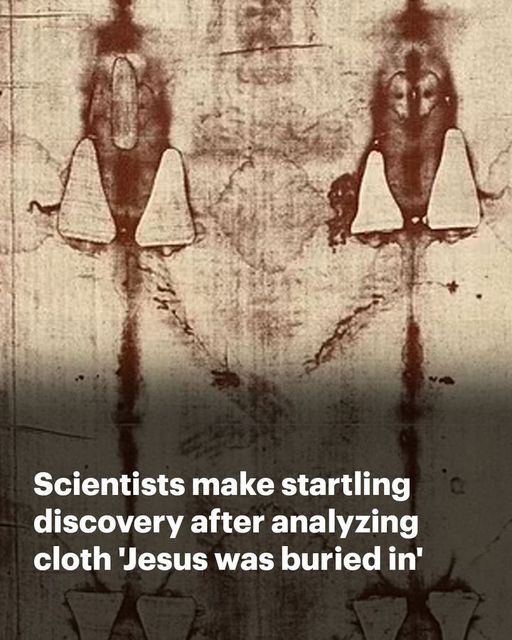The Turin Shroud has mystified the public for hundreds of years. It was first displayed in the 1390s and many believe it’s the cloth Jesus was buried in.
Jesus’ Linen Shroud

Scientists and scholars have studied the Bible’s teachings for generations. Amidst their research numerous historical artifacts have been discovered, some believed to be referenced in the Bible or by Jesus. Perhaps one of the most fascinating is the Turin Shroud. An undyed cloth that was used to bury those who couldn’t afford a coffin. When it was displayed in the 1350’s it was advertised as the actual cloth that Jesus was buried in.
Confusion Regarding Jesus’ Cloth

However, 1980’s research proved the claims false, until now. Firstly, in 1988, a team of researchers worldwide collaborated, analyzing a small sample of the Turin Shroud, and determined the manufacturing date was between 1260 and 1390 AD.
New Findings

Recently, 2 Italian researchers used X-ray technology to examine 8 samples of the cloth and determined it was manufactured around the time that Jesus was alive.
The new study took place at the Institute of Crystallography in Italy, using wide-angle X-ray scattering, or WAXS. The technology assesses the “natural aging of flax cellulose and converts it to time since manufacture.”
The Bible Tells Me So

According to the Bible, Joseph of Arimathea wrapped the body of Jesus in a linen shroud.
Matthew 27:59-60 reads: “Then Joseph took the body and wrapped it in a new linen cloth. He put Jesus’ body in a new tomb that he had dug in a wall of rock. Then he closed the tomb by rolling a very large stone to cover the entrance. After he did this, he went away.”
Matching Descriptions

Another interesting detail lends weight to the possibility that the Turin Shroud was the cloth used to bury Jesus. Interestingly, the shroud depicts an image of a man who matches Jesus’ predicted height. Additionally, it has wounds that correspond to those described about Jesus and the Crucifixion.
Other Interesting Finds

History lovers and religious fanatics have a few things in common, namely their fascination with anything relating to biblical times or Jesus. Here are a few other interesting findings that have been speculated to date back to the time when Jesus walked the earth.
The Merneptah Stele

In 1896, the Merneptah Stele was discovered by Flinders Petrie referencing the Israelites. This is of archaeological significance because it notes the existence of the Israelites as far back as 1203 B.C.
Holiest City

Bethlehem is one of the holiest cities in the Middle East. As a result, it’s been a popular place for numerous archaeological digs. One interesting find was Rachel’s burial site. The site is situated between the boundaries of the Jewish and Muslim populations of the area and holds significance to both parties.
Galilee

Galilee is another place of historical and archeological significance. For example, a fishing boat was discovered in the Sea of Galilee dating back to the time from the Gospels. Additionally, other findings include church mosaics and ruins, dating back to 400 CE.
City of Jericho

Lastly, the City of Jericho is referenced many times in the Bible, most notably marking the “triumph of the Israelites in Canaan and the power of the Ark of the Covenant.”
However, scientists have found evidence of the city’s existence dating back before Biblical times, marking it as one of the world’s oldest cities. Archaeologists have discovered living quarters within the walls and proof of functioning societies.
Jesus lived centuries ago so we may never truly know what happened throughout history. Still, it’s fun to imagine life thousands of years ago. Furthermore, people devote their education and careers to helping us better understand the likely realities of those who came before us; those who paved the way for future generations.
